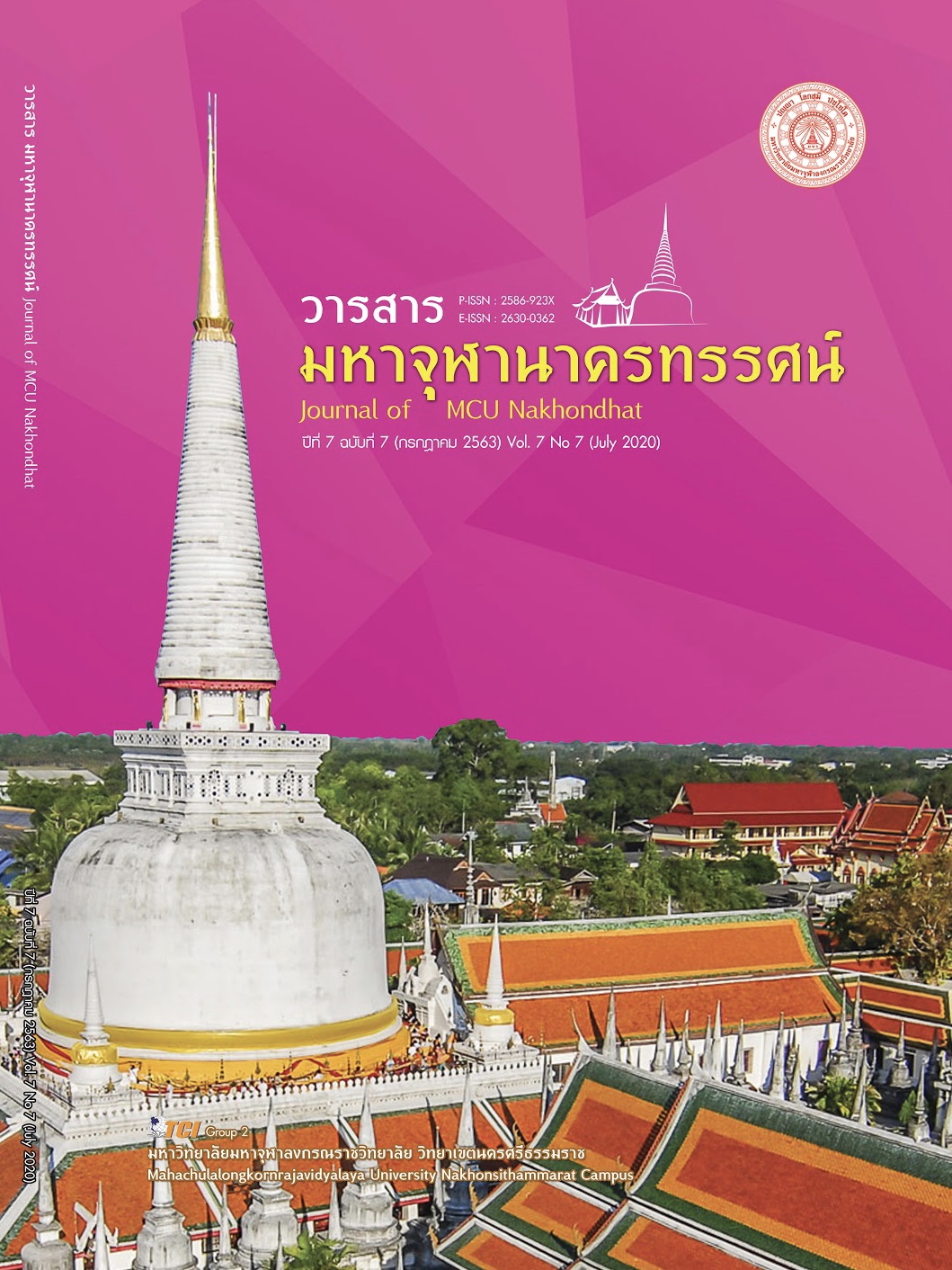THE DEVELOPMENT OF STEM EDUCATION LEARNING ACTIVITIES TO ENHANCE PROBLEM SOLVING THINKING ABILITY FOR MATHAYOMSUKSA 1
Main Article Content
Abstract
The purposes of this study were: 1) to create and evaluate the efficiency of STEM education learning activities to enhance problem solving thinking ability for Mathayomsuksa 1 students of according to criteria 75/75. 2) to comparison of problem – solving abilities between before and after STEM education learning activities to enhance problem solving thinking ability for Mathayomsuksa 1 students. The research methodology does by research and development in 2 steps as follows: Step 1: The creation and evaluation the efficiency of STEM education learning activities to enhance problem solving thinking ability for Mathayomsuksa 1 students. By creating an activity according to the STEM education model considered the appropriateness of activities by 3 experts and then take to experiment with students who study in Mathayomsuksa 1 at Srithepprachasan school by 3, 9, and 30 students, respectively. The instruments that used for research are the leaning activities, assessment form appropriate of learning activities. The statistics which used for data analysis were Mean () Standard Deviation (S.D.) and E1/E2. Step 2: The experiment to used learning activities STEM education to compare problem solving thinking ability for Mathayomsuksa 1 students by 41 students. The samples were chosen by Simple Random Sampling. The research design used was One Group Pretest Posttest Only Design and instrument were problem solving thinking ability model measure. The statistics which used for date analysis were Mean (
), Standard Deviation (S.D.) and t – test (dependent).
The result of the research revealed that: 1) The STEM education learning activities to enhance problem Solving thinking ability for Mathayomsuksa 1 students. It has been submitted for examining the appropriate of learning activities at high level and met the efficiency at 78.49/ 77.98 2) The problem-solving thinking ability in Posttest were higher than Pretest at the statistical significance .01
Article Details
References
นัสรินทร์ บือซา. (2557). ผลการจัดการเรียนรู้ตามแนวคิดสะเต็มศึกษา (STEM Education) ที่มีต่อผลสัมฤทธิ์ทางการเรียนชีววิทยาความสามารถในการแก้ปัญหาและความพึงพอใจต่อการจัดการเรียนรู้ของนักเรียนชั้นมัธยมศึกษาปีที่ 5. ใน วิทยานิพนธ์ศึกษาศาสตรมหาบัณฑิต สาขาวิชาการสอนวิทยาศาสตร์และคณิตศาสตร์. มหาวิทยาลัย สงขลานครินทร์.
ปาลิตา สุขสำราญ. (2560). การพัฒนารูปแบบการจัดการเรียนรู้วิทยาศาสตร์ตามแนวคิดสะเต็มศึกษาที่ส่งเสริมจิตวิทยาศาสตร์และทักษะการแก้ปัญหาสำหรับนักเรียนระดับประถมศึกษา. ใน ดุษฎีนิพนธ์ปริญญาการศึกษาดุษฎีบัณฑิต สาขาวิชาหลักสูตรและการสอน. มหาวิทยาลัยนเรศวร.
รัตนะ บัวสนธ์. (2552). การวิจัยและพัฒนานวัตกรรมการศึกษา. กรุงเทพมหานคร: สำนักพิมพ์คำสมัย.
สถาบันส่งเสริมการสอนวิทยาศาสตร์และเทคโนโลยี. (2561). สะเต็มศึกษา Science Technology Engineering and Mathematics Education (STEM Education). กรุงเทพมหานคร: สำนักพิมพ์แห่งจุฬาลงกรณ์มหาวิทยาลัย.
สะเต็มศึกษาประเทศไทย. (2557). คำถามที่พบบ่อย (FAQ). เรียกใช้เมื่อ 8 ตุลาคม 2562 จาก http://www.stemedthailand.org/?post_type=faq
สำนักงานเลขาธิการสภาการศึกษา. (2560). แผนการศึกษาแห่งชาติ พ.ศ. 2560 – 2579. กรุงเทพมหานคร: บริษัทพริกหวานกราฟฟิค จำกัด.
สำนักงานคณะกรรมการการศึกษาขั้นพื้นฐาน กระทรวงศึกษาธิการ. (2560). มาตรฐานการเรียนรู้และตัวชี้วัด กลุ่มสาระการเรียนรู้คณิตศาสตร์ วิทยาศาสตร์ และสาระภูมิศาสตร์ ในกลุ่มสาระการเรียนรู้สังคมศึกษา ศาสนา และวัฒนธรรม (ฉบับปรับปรุง พ.ศ. 2560) ตามหลักสูตรแกนกลางการศึกษาขั้นพื้นฐาน พุทธศักราช 2551. กรุงเทพมหานคร: โรงพิมพ์ชุมนุมสหกรณ์การเกษตรแห่งประเทศไทย จำกัด.
Strimel, G. (2014). Shale Gas Extraction: Drilling In to Current Issues and Making STEM Connections. Technology and Engineering Teacher, 73(5), 16-24.


